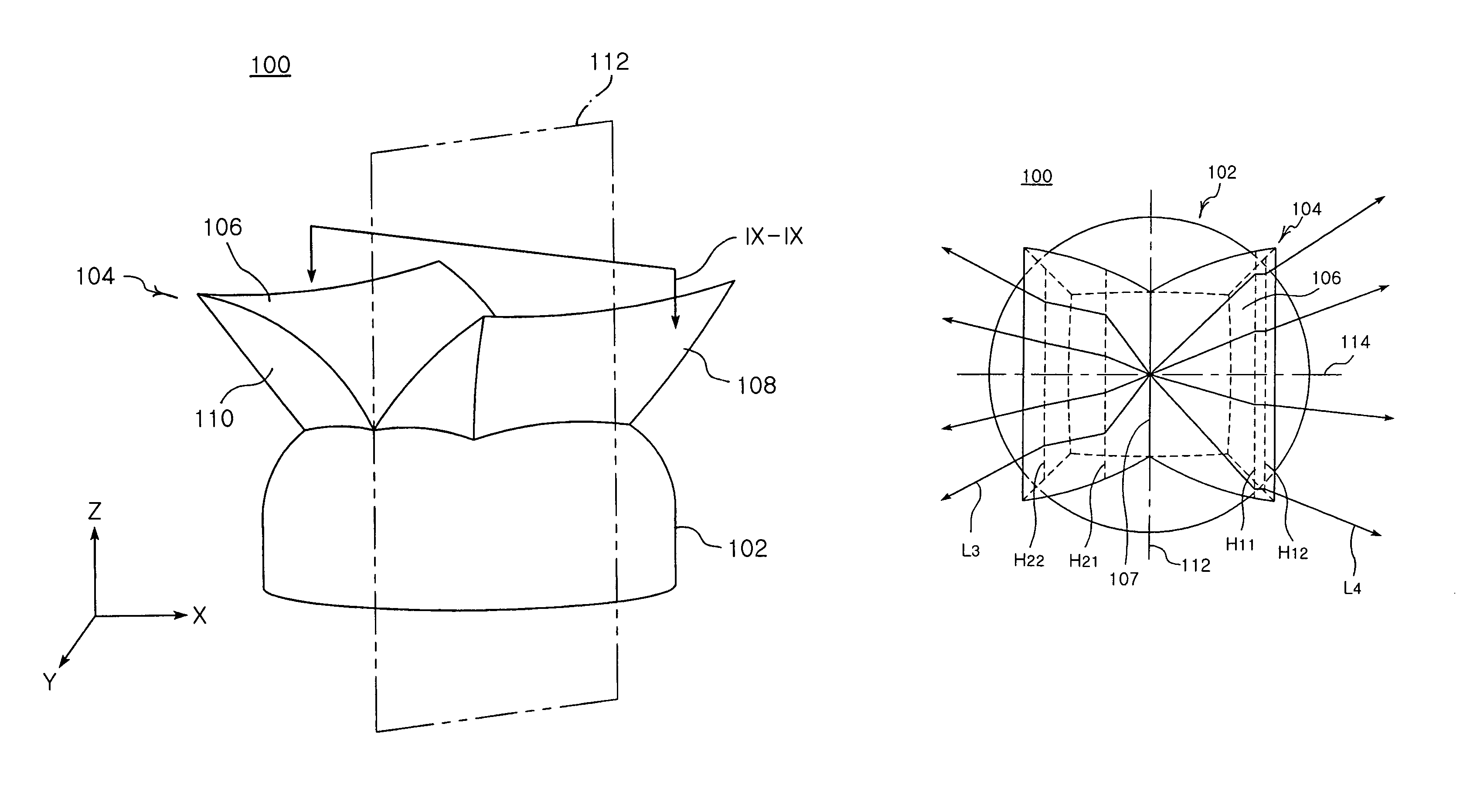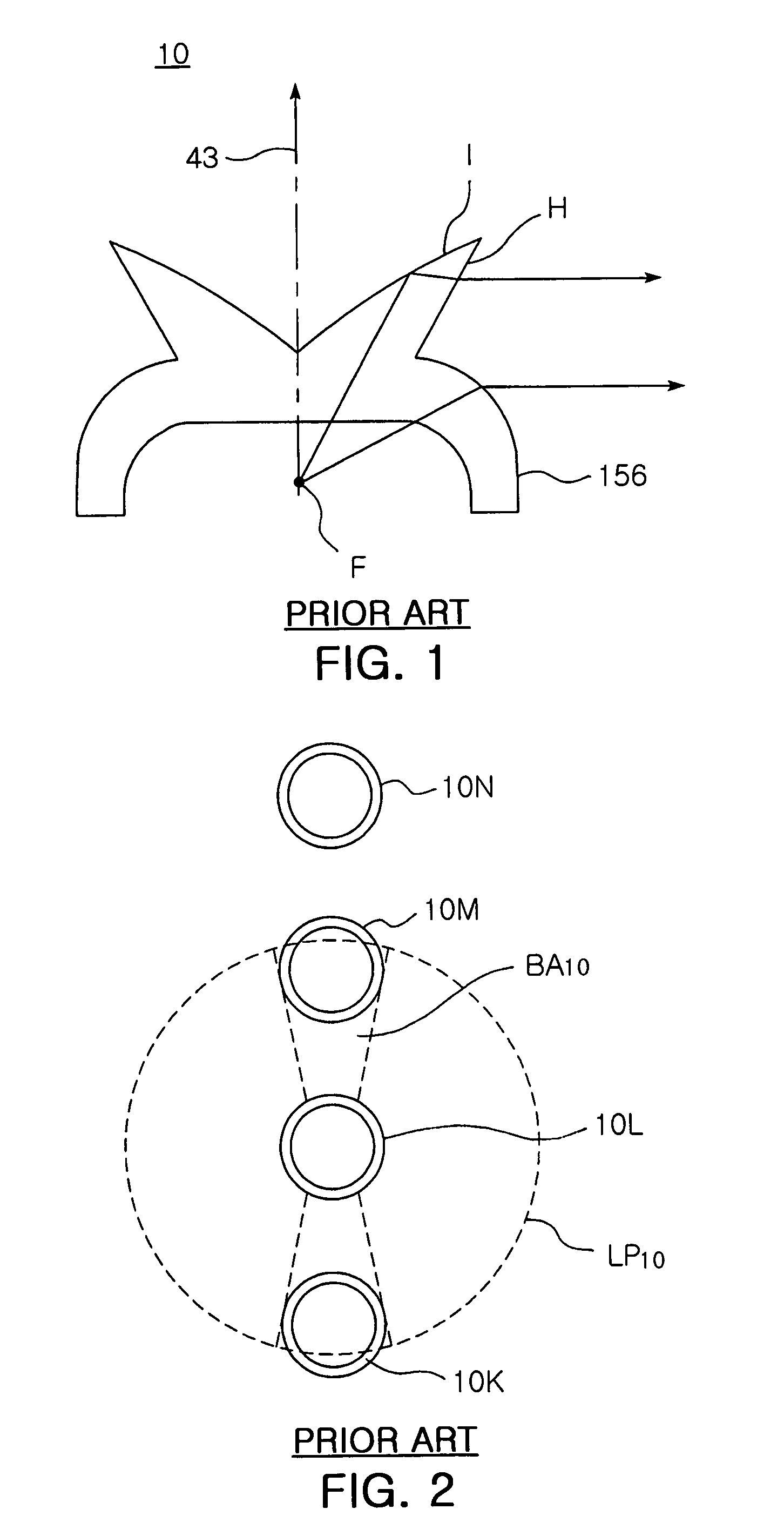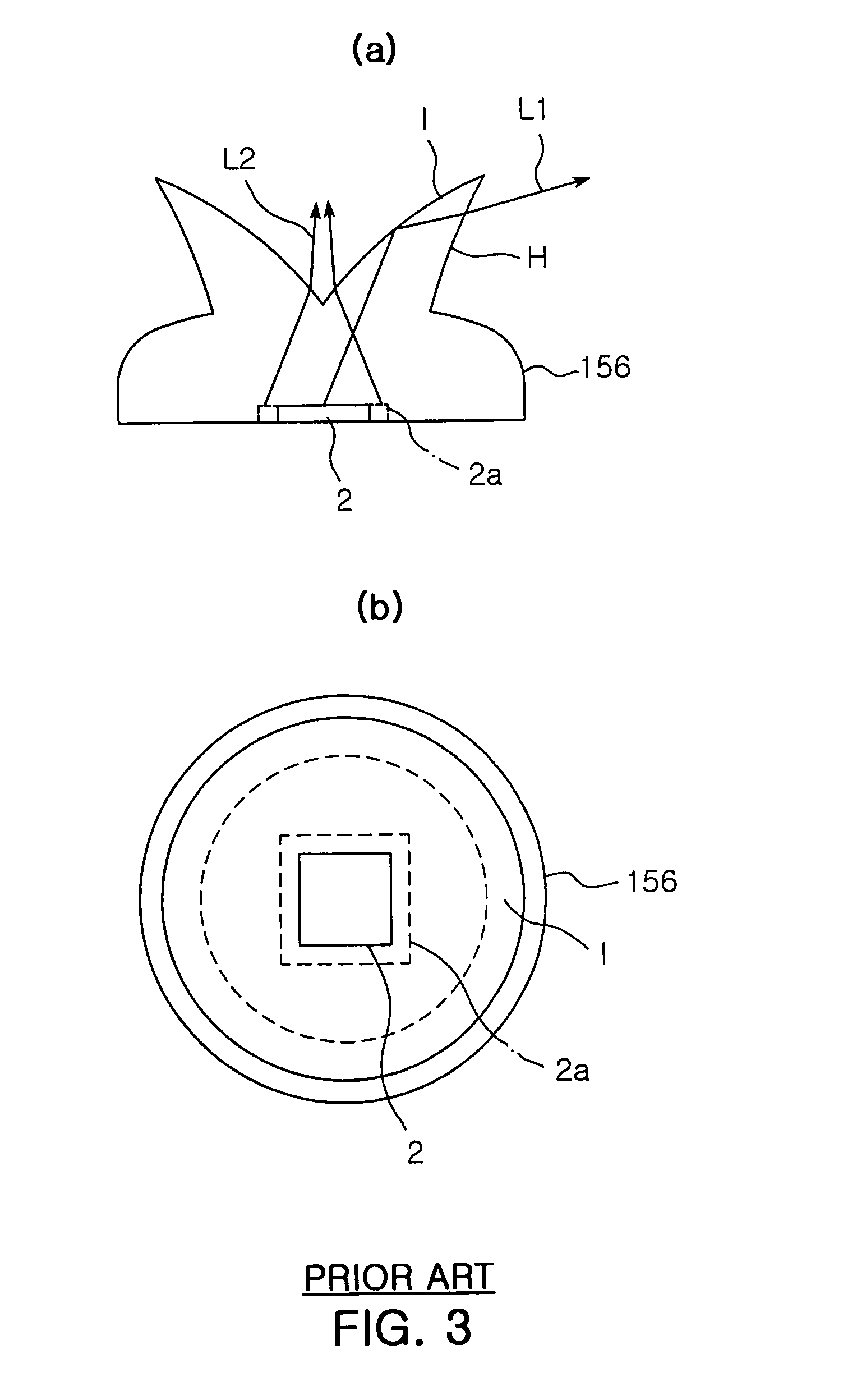Dipolar side-emitting LED lens and LED module incorporating the same
a technology of led modules and led lenses, applied in the field of diodes (led), can solve the problems of reducing the color uniformity of an entire lcd backlight module, obstructing the miniaturization, and poor uniformity
- Summary
- Abstract
- Description
- Claims
- Application Information
AI Technical Summary
Benefits of technology
Problems solved by technology
Method used
Image
Examples
Embodiment Construction
[0045]Preferred embodiments of the present invention will now be described in more detail with reference to the accompanying drawings.
[0046]FIG. 4 is a perspective view of an LED lens according to a first embodiment of the invention, FIG. 5 is a perspective view of the LED lens shown in FIG. 4 which is arranged in a different orientation, FIG. 6 is a plan view of the LED lens shown in FIG. 4, FIG. 7 is a front elevation view of the LED lens shown in FIG. 4, and FIG. 8 is a side elevation view of the LED shown in FIG. 4.
[0047]Referring FIGS. 4 to 8, an LED lens 100 of the invention comprises a unitary body made of transparent material, and includes an upper hemisphere-shaped base 102 and a pair of opposite wings 104 projected from opposite top portions of the base 102.
[0048]The base 102 is generally shaped as a hemisphere to receive an LED chip C therein while radiating light generated by the LED chip C to the outside.
[0049]The wings 104 are configured symmetric about an imaginary ve...
PUM
 Login to View More
Login to View More Abstract
Description
Claims
Application Information
 Login to View More
Login to View More - R&D
- Intellectual Property
- Life Sciences
- Materials
- Tech Scout
- Unparalleled Data Quality
- Higher Quality Content
- 60% Fewer Hallucinations
Browse by: Latest US Patents, China's latest patents, Technical Efficacy Thesaurus, Application Domain, Technology Topic, Popular Technical Reports.
© 2025 PatSnap. All rights reserved.Legal|Privacy policy|Modern Slavery Act Transparency Statement|Sitemap|About US| Contact US: help@patsnap.com



